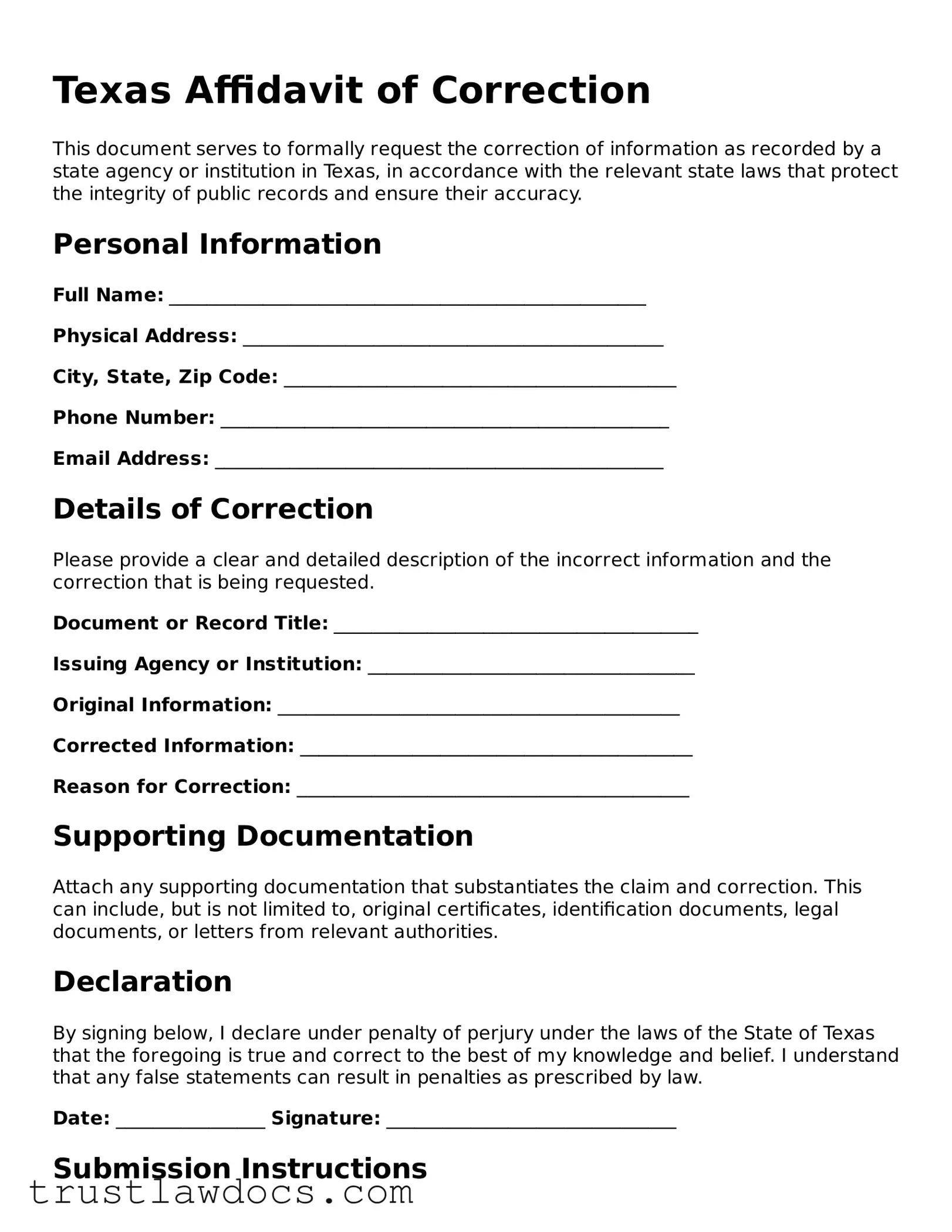Texas Affidavit of Correction
This document serves to formally request the correction of information as recorded by a state agency or institution in Texas, in accordance with the relevant state laws that protect the integrity of public records and ensure their accuracy.
Personal Information
Full Name: ___________________________________________________
Physical Address: _____________________________________________
City, State, Zip Code: __________________________________________
Phone Number: ________________________________________________
Email Address: ________________________________________________
Details of Correction
Please provide a clear and detailed description of the incorrect information and the correction that is being requested.
Document or Record Title: _______________________________________
Issuing Agency or Institution: ___________________________________
Original Information: ___________________________________________
Corrected Information: __________________________________________
Reason for Correction: __________________________________________
Supporting Documentation
Attach any supporting documentation that substantiates the claim and correction. This can include, but is not limited to, original certificates, identification documents, legal documents, or letters from relevant authorities.
Declaration
By signing below, I declare under penalty of perjury under the laws of the State of Texas that the foregoing is true and correct to the best of my knowledge and belief. I understand that any false statements can result in penalties as prescribed by law.
Date: ________________ Signature: _______________________________
Submission Instructions
To submit this affidavit, please send the completed form along with any supporting documentation to the appropriate state agency or institution at the address provided by them. It is recommended to keep a copy of the entire submission for your records.
Contact Information
For questions or additional information, please contact the issuing agency or institution directly. Their contact information can be typically found on the document in question or through a simple web search.
